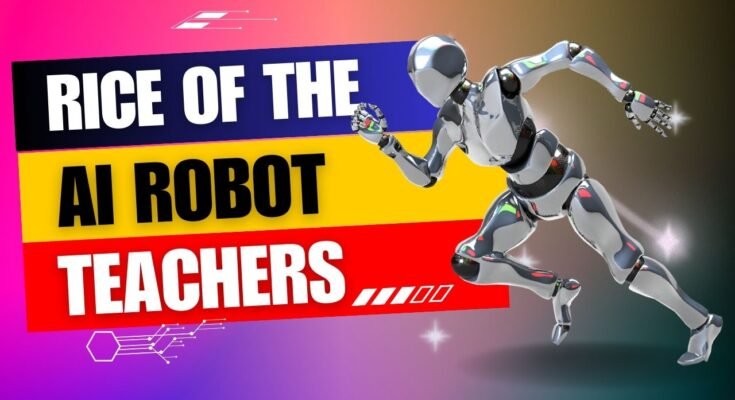The integration of Artificial Intelligence (AI) in education is transforming the traditional classroom, introducing innovative methods of teaching and learning. The concept of “robot teachers” might sound like science fiction, but AI-driven educational tools are increasingly becoming a reality in schools worldwide. This comprehensive guide explores the impacts of AI on education and the evolving dynamics between teachers and students.
The AI Revolution in Education
AI in education goes beyond mere technology. It’s about personalized learning, efficiency, and opening new educational frontiers.
AI-Driven Personalized Learning
AI systems can tailor educational content to meet the individual needs of students, considering their learning pace, style, and interests.
Example:
An AI system that adapts math problems to suit each student’s proficiency level, providing more challenging problems as they improve.
Automation of Administrative Tasks
AI can automate time-consuming tasks like grading and attendance, allowing teachers to focus more on teaching and less on bureaucracy.
The Role of AI Teachers
While AI teachers are not replacing human educators, they are augmenting the educational experience.
Supplementing Traditional Teaching
AI can provide additional support to students, offering explanations, quizzes, and feedback outside regular class hours.
Interactive Learning Environments
AI creates dynamic, interactive learning environments which can engage students in ways traditional methods may not.
Example:
Virtual reality (VR) classrooms powered by AI, where students can immerse themselves in historical events or scientific discoveries.
The Human Element in Education
Despite the advancements in AI, the human element remains irreplaceable in education. Emotional intelligence, empathy, and the ability to inspire cannot be replicated by machines.
Teacher-Student Relationship
The bond between teachers and students is fundamental for motivation and emotional support, which AI cannot fully replicate.
Challenges and Ethical Considerations
The rise of AI in education brings challenges and ethical considerations.
Data Privacy
Handling student data raises concerns about privacy and security. Ensuring that AI systems are secure and that student data is protected is paramount.
Digital Divide
The disparity in access to AI technology can widen the educational gap between different socio-economic groups.
Preparing for an AI-Integrated Future
Both educators and students need to prepare for a future where AI is an integral part of education.
Developing Digital Literacy
Educators must become proficient in AI tools to effectively integrate them into their teaching.
Continuous Learning for Teachers
Teachers need to engage in lifelong learning to stay abreast of technological advancements in education.
Conclusion
The rise of robot teachers symbolizes a shift towards a more personalized, efficient, and interactive educational system. While AI has the potential to reshape education, the heart of learning remains human. Embracing AI in education requires balancing technology with the irreplaceable qualities of human teachers, ensuring that the focus remains on enhancing the learning experience for all students.



